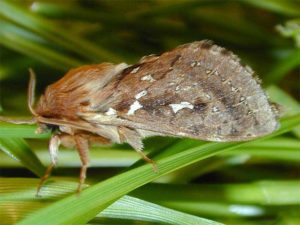Q: I have four different apple trees and this year the fruit was full of codling moth. I know I can buy traps, but they are expensive. Is there anything else I can do, apart from spraying?
 A: To avoid all codling moth damage generally requires several spray applications, timed carefully when the moths are most active. However, there are a few other things you can do to reduce the risk.
A: To avoid all codling moth damage generally requires several spray applications, timed carefully when the moths are most active. However, there are a few other things you can do to reduce the risk.
In winter, clear up all the vegetation under the trees and rake up old fruit, leaves and twigs to remove any overwintering larvae that have made it to the ground. Then take a wire brush and gently clean off any flaking bark from the trunk and branches, as larvae overwinter there, too.
Wrap rings of corrugated cardboard round the main branches and trunks during the growing season to trap larvae that have already fed on the fruit and are moving down the tree to find a place to pupate. They often settle in the corrugations of the cardboard, so replace it regularly and burn the infested pieces.
Do what you can to encourage birds like silvereyes to inhabit the trees – they are known to feed on a variety of small caterpillars, including codling moth larvae. Codling moth is one of the most difficult apple pests to control and although you can reduce the population in your trees, you can’t stop adult moths flying over the fence. If these measures don’t work, you might have to think about spraying. Pheromone traps themselves are not a very efficient control method. Rather, they are an indicator of when the moths are active to help determine the most effective time to spray.










Join the Discussion
Type out your comment here:
You must be logged in to post a comment.